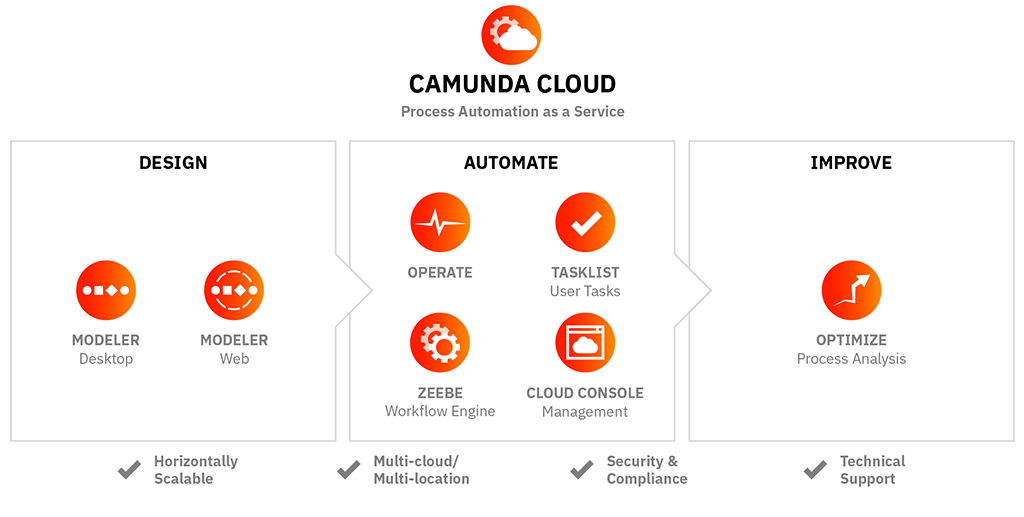What Can a Cloud Workflow Engine Do for Your IT Team?

There are quite a few ways to benefit from your work tools: the way they help you get the job done more quickly, with fewer errors, or even making the job less manual are all different benefits that a tool can offer. The same is true of workflow management. When managing business processes, there are numerous tools that might come into play, but a central and important one is the cloud workflow engine.
A workflow engine is a software platform that is used to monitor and manage the various steps of a workflow all in one place. And, as workflows are increasingly happening in virtual machines, so too does the workflow engine take place in the cloud as well. Therefore, it’s not only the workflow engine itself that proves to benefit you and your business — it’s also the cloud computing that takes place. All of these changes to your business process can even prove useful and helpful to your IT team, including the benefits listed below.
Reduce Risks
One of the first noted benefits of using a cloud workflow engine is the fact that it puts some distance between the physical resources you use and the operations themselves. This means that if your process winds up dealing with problematic inputs, or even is the victim of malicious code, there’s a degree of separation that keeps those issues from reaching and affecting the actual on-premise computers in play. Additionally, when using a platform for your workflow, you can be sure that the service you’re using will have contingency plans for when there is unexpected downtime from technical issues and so on. There are backups and other forms of reliable support that can keep you afloat when things go awry — so using a SaaS-based workflow engine makes a lot of sense for IT teams who want to be prepared for the worst.
Increase Independence
While there is an increased reliance on the service itself, a cloud workflow engine helps your operations become more independent of the IT team in particular, meaning they have more time to solve bigger issues and to tackle bigger needs for the business. For one thing, as mentioned, the shifting of responsibilities like software updates to the third-party software from the shoulders of IT is a positive change in itself. However, there’s more to it than updates: even installation, deployment, and optimization are all made easier than ever with a cloud workflow engine, and so these become less IT-specific and more accessible to team members without a background in coding and such.
Improve Collaboration
Piggybacking on the idea of accessibility, there’s an ease of access to the cloud workflow engine that means you can make significant changes as needed from anywhere — and that whoever you have helping you can do the same. IT doesn’t need to be in the same room to collaborate, fix, and implement; instead, they can do it from home or around the world. The same is true of gathering and assessing insights on the processes taking place: IT can share these companywide, allowing for better and more easily understood interdepartmental collaboration efforts overall. There’s no need to switch between various software to display the status of a business process and to communicate needs to each department in kind. Instead, the engine displays its metrics in a simplified manner that can be understood by any team at a glance without leaving the platform.
Heighten Productivity
There’s a lot that can be missed when you’re having to micromanage the many parts of a business workflow. Thankfully, in a workflow engine, those tasks are capable of being automated, orchestrated, and continually optimized by the software itself, leaving IT professionals to handle bigger tasks and contributing to a higher overall level of productivity from the team. Additionally, when there is downtime, it’s minimized greatly by the interference of your software’s own support service, meaning that any such downtime can still be used by your IT team to learn what went wrong, to pivot accordingly, and even to prepare operations for startup once more. No more do they need to focus on the small-fry troubleshooting!
Allow for Scalability
One other thing that’s tremendously important to any business is the ability to grow, and the scalability of the process itself is a crucial step to such growth. Generally, an IT team would be charged with the specifics that go into making a process scalable, but with a workflow engine, especially one that’s cloud-based, there’s no reason for a huge undertaking: the workflow automatically becomes primed for scaling horizontally. More than that, the tasks that are meant to be scaled can even be automated or brought back to manual processing in order to make this expansion more suitable to the changes in personnel and resources as the business grows.
Simplifies Action Items
What you’ll see in cloud workflows is an increase in the number of things you’re able to monitor all at once, and in the same vein, an increase in the number of factors you’re able to manage for each individual task within the process. But with this increase comes the question, “Will it mean there’s too much to deal with?” The plain answer is no, of course. Here’s why: with the cloud workflow engine, various factors that form the insights are correlated and aggregated to give you overall impressions, and only when something specific needs to occur will it call for action items to be resolved by your team. Thanks to such simplification of the insights and action items related to your workflow, your IT team’s time and energy will be much better spent overall!








